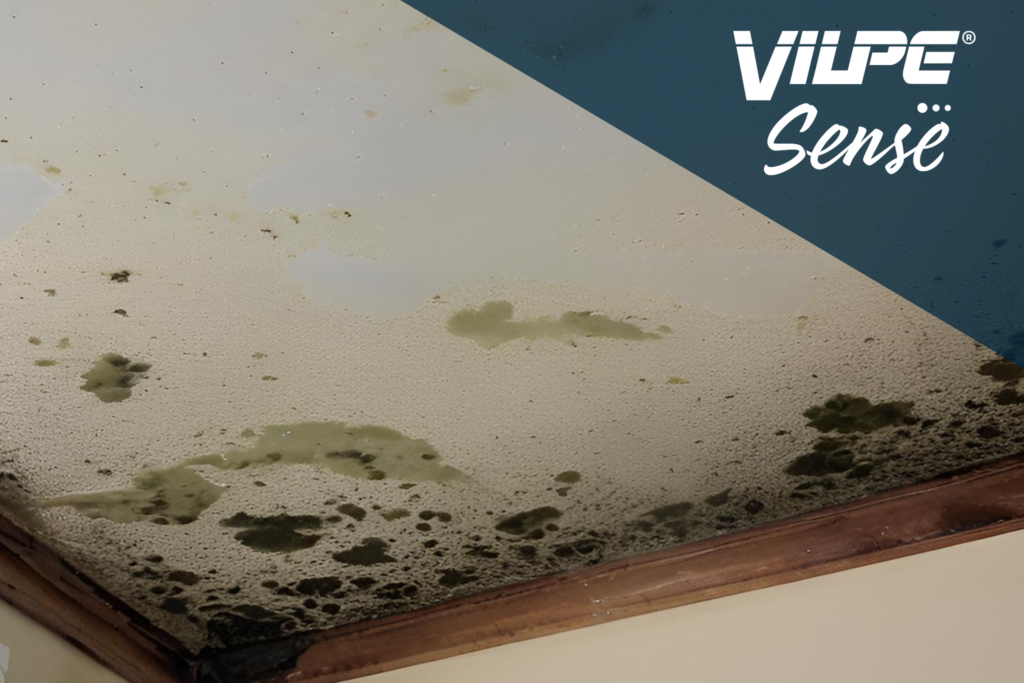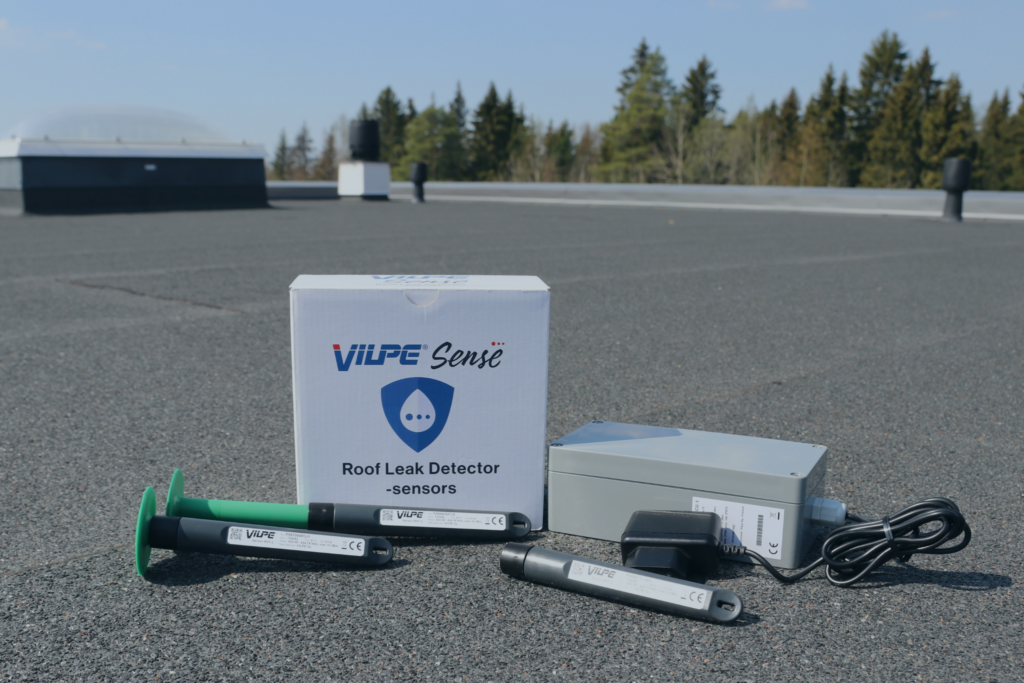Everything You Need to Know About Mold in Building Structures

Understanding mold dynamics is essential for all stakeholders involved in building design, construction, maintenance, and occupancy. Mold presents more than mere cosmetic concerns; it can degrade building materials and compromise a structure’s integrity over time. Moreover, exposure to mold in indoor environments can lead to health issues such as allergic reactions, respiratory problems, and the exacerbation of asthma symptoms (WHO, 2009). Mold problems in structures are expected to rise with climate change due to increased precipitation, higher relative humidity, and warmer temperatures (Cabrera, Samuelson and Kurth, 2019).
By comprehending how mold grows and spreads, stakeholders can implement strategies to prevent its proliferation. This involves selecting appropriate materials, designing buildings to minimize moisture accumulation, and establishing maintenance practices that proactively address potential mold growth. Therefore, the purpose of this article is to equip building investors with knowledge about mold in construction structures. We will explore what mold is, how it manifests and spreads. Finally, we will offer practical advice on actions you can take to prevent mold formation in structures, ensuring long-term durability and structural integrity.
The biological basics of mold growth
Mold is a type of fungus composed of microscopic organisms. Most mold species thrive in moist, warm environments. These fungi play a crucial role in nature by breaking down dead organic matter such as leaves and wood.
Molds reproduce asexually by producing tiny, lightweight spores that disperse through the air. These spores are microscopic, resilient to harsh environmental conditions, and can remain dormant until they encounter a suitable environment—typically a damp surface with available organic material to consume. Air movement from ventilation systems, ductwork, the opening and closing of doors, and even foot traffic can aid in the dispersion of spores.
Under favorable conditions, mold undergoes several growth stages. Initially, when spores land on a moist, nutrient-rich surface, they absorb water and begin to germinate. The germinating spores develop hyphae—thread-like filaments that extend and branch out, extracting nutrients from their substrate. As these hyphae proliferate, they form a network known as mycelium, which constitutes the main body of the mold. Eventually, the mold produces new spores, germinates and establishes new mold colonies.
Environmental conditions influencing mold growth in structures
Mold thrives under three primary conditions: moisture, temperature, and nutrients (Sedlbauer et al., 2001). Some climate regions provide better conditions for mold growth than others (Vecherin et al., 2024) which should be considered at the building stage. Among these conditions, moisture is the most critical factor influencing mold growth in buildings. Mold requires damp environments, with common moisture sources including roof or pipe leaks, condensation on surfaces, and elevated humidity levels. Poorly ventilated areas are particularly vulnerable to mold growth, as moisture can accumulate and create ideal conditions for mold proliferation.
While mold generally prefers warm environments, it can grow across a broad temperature range. Most mold species like indoor temperatures between 20°C and 30°C. However, certain species can grow in cooler conditions, such as those found in unheated buildings during colder months. However, studies have shown that mold growth stops during freezing temperatures (Vinha et al., 2013).
Oxygen is essential for mold growth, and in most building settings, oxygen is readily available and does not limit mold growth. Nutrients for mold are typically derived from organic materials commonly found in building components (Vinha et al., 2013).
Vinha et al. (2013) argue that whereas mold growth typically occurs only on the surfaces of materials, in open-pored insulation materials, such as mineral wool, mold can also develop within the material. When this type of material becomes moldy, the total amount of mold can be very high and more likely to be difficult to tackle.
Mold growth risk has been assessed in different ways (Sedlbauer et al., 2001; Starakiewicz et al., 2019); however, the mold index developed by the Technical Research Center of Finland (VTT) and Tampere University of Technology, is a widely used scale for evaluating mold development on building materials under varying environmental conditions (Ojanen et al., 2010; Viitanen and Ojanen, 2007). This index ranges from 0 to 6, where:
- 0: No visible mold growth
- 1-2: Initial stages of mold growth, with sparse or slight colonization
- 3-4: Moderate mold growth, clearly visible but not extensive
- 5-6: Heavy mold growth, with widespread and dense colonization
The index is commonly applied in research and risk assessments to model mold growth in specific environments, considering factors like relative humidity, temperature, and material properties (Ojanen et al., 2010).
How mold degrades different building materials
Mold degrades building materials by feeding on them and breaking down their structural components. Mold secretes enzymes that break down complex organic molecules into simpler substances it can absorb as nutrients which weakens the material’s structural bonds. Additionally, some molds produce organic acids as metabolic byproducts. These acids can corrode materials and further accelerate the degradation process.
Organic materials like wood, paper, and certain types of insulation are more susceptible to mold. Mold feeds on the cellulose and other organic compounds in these materials. For instance, in wood, mold consumes cellulose and lignin, which give wood its strength and rigidity. This leads to weakening of wooden structures like beams and supports. Insulation materials, particularly those made from organic fibers like cellulose, are also vulnerable. Mold growth in insulation reduces its effectiveness and can lead to the deterioration of adjacent structural elements. In contrast, inorganic materials such as metal, glass, and concrete are generally more resistant to mold growth because they lack organic nutrients. However, inorganic materials can still be affected indirectly if mold grows on accumulated dust or if moisture causes them to corrode. Vinha et al. (2013) classify building materials into four categories based on their sensitivity to mold growth. For example, rough-sawn and planed timber (pine and spruce) were the most mold-sensitive (Category 1), while glass, metals, alkaline fresh concrete, and materials containing effective mold inhibitors were the least mold-sensitive (Category 4).
Composite materials combine organic and inorganic substances, making them particularly vulnerable. For example, particleboard and plywood consist of wood particles or veneers bonded with adhesives. If moisture penetrates these materials, mold can feed on the organic components, while the adhesives may break down. According to Vinha et al. (2013), mold growth in building structures often occurs at the junction between two materials. To evaluate the risk of mold, it is essential to understand how materials with varying levels of mold sensitivity interact when in contact. Research indicates that the risk should typically be assessed based on the more mold-prone material, as it can also accelerate mold growth on materials that are less susceptible.
Mold prevention in structures
To prevent mold, one needs to focus on the three critical components that enhance it: nutrient (building material), moisture and temperature (Vinha et al., 2013). The choice of building materials plays a significant role in preventing mold. Materials that absorb and retain moisture—such as certain types of insulation, or untreated wood—increase the likelihood of mold development (Vinha et al., 2013).
An important part of mold prevention is moisture management where proper ventilation is a key factor. Without adequate airflow, moisture becomes trapped inside the building, creating a humid environment ideal for mold growth (Christen, 2002). It is important to ventilate not only indoor spaces but also structural areas like roofs and crawl spaces. Additionally, promptly addressing leaks from roofs, plumbing, or exterior walls is crucial, as water intrusion can foster mold-friendly conditions. Regular inspections and timely repairs are key to preventing moisture buildup and subsequent mold issues. It is important to note that mold is not the only adverse consequence of excess moisture. High relative humidity, particularly fluctuations in relative humidity, is associated with, for instance, corrosion of metal components, and deformation of materials (Vinha et al., 2013). It is also important to understand the risk profile of your building. Buildings located in areas with high humidity or frequent rainfall are more susceptible to mold. The constant presence of moisture in the air increases the likelihood of condensation and dampness within structures. In such climates, extra precautions are necessary.
Seasonal and temperature changes can significantly influence mold growth patterns. During warmer months, higher temperatures combined with increased humidity can accelerate mold proliferation. Conversely, in colder seasons, inadequate heating and insulation can lead to condensation on cold surfaces, providing moisture for mold to thrive when the weather gets warmer. Factors influencing condensation are high relative humidity, rainy weather, quick temperature shifts and lower temperatures (Vinha et al., 2013).
Detection, assessment, and remediation
One of the most immediate signs of mold presence is visual growth on surfaces. Mold can appear in various colors, including black, green, white, or even orange, and may have a fuzzy or slimy texture. Also, a musty or earthy odor is often a strong indicator of mold, especially when the source is not immediately visible.
To accurately detect and assess mold contamination, both surface and air sampling methods are employed (EPA, 2008).
- Surface sampling involves collecting samples from visible mold growth using swabs, tapes, or bulk samples of contaminated materials.
- Air sampling measures the concentration of mold spores suspended in the air, which is particularly useful for detecting hidden mold sources.
- These samples are then analyzed in laboratories to identify mold types and concentrations.
Assessing the extent of mold contamination is critical for determining the scope of remediation required. This involves measuring the size of the affected areas, identifying the mold species present, and understanding the level of spore dispersion throughout the building (EPA, 2008).
Evaluating the impact of mold involves inspecting these materials for signs of decay, rot, or weakening. Determining the severity of the damage guides decisions on whether materials can be cleaned and restored or need complete replacement.

Moisture management with VILPE Sense
Effective moisture management is a crucial component of mold prevention. It involves not only detecting leaks or excess moisture accumulation due to condensation but also ensuring proper ventilation of structures. The issue is not merely the presence of temporary moisture but whether that moisture can dry effectively. Adequate ventilation promotes air circulation, removing moist air and introducing fresh air, thereby inhibiting mold growth.
The VILPE Sense product family provides proactive solutions designed to monitor and control environmental conditions in critical areas like roofs and crawl spaces, effectively preventing mold development. The VILPE Sense humidity control system is a demand-based ventilation solution that measures temperature and humidity, integrating this data with information about the building materials to assess the mold index (Ojanen et al., 2010; Viitanen and Ojanen, 2007). When increased humidity is detected and outdoor conditions are favorable, the system automatically ventilates the structure to reduce moisture levels. This demand-based ventilation ensures that roofs and crawl spaces remain dry and inhospitable to mold.
In addition to humidity control, VILPE Sense leak detectors can be installed within roof and wall structures to provide continuous monitoring for moisture intrusion. These detectors swiftly identify leaks and precipitation-related issues, triggering real-time alerts for immediate repair to prevent mold manifestation. By enhancing roof maintenance and preserving structural integrity, VILPE Sense delivers long-term value for building owners, ensuring a mold-free and healthy environment.
References
Christen, K. (2002). Mold growth linked to airtight building designs.
Links
Three common mold types:
There are three types of mold groups that are common in buildings.
- Stachybotrys chartarum or “black mold” is dark green or black and thrives on materials with high cellulose content, such as wet wood, paper, and gypsum board.
- Aspergillus species can appear in various colors and are known to grow on a wide range of materials, including fabrics, walls, and insulation. Some species produce mycotoxins that can be harmful when inhaled.
- Penicillium molds are blue or green in color and are often found on water-damaged materials like wallpaper, carpet, and spoiled food.
